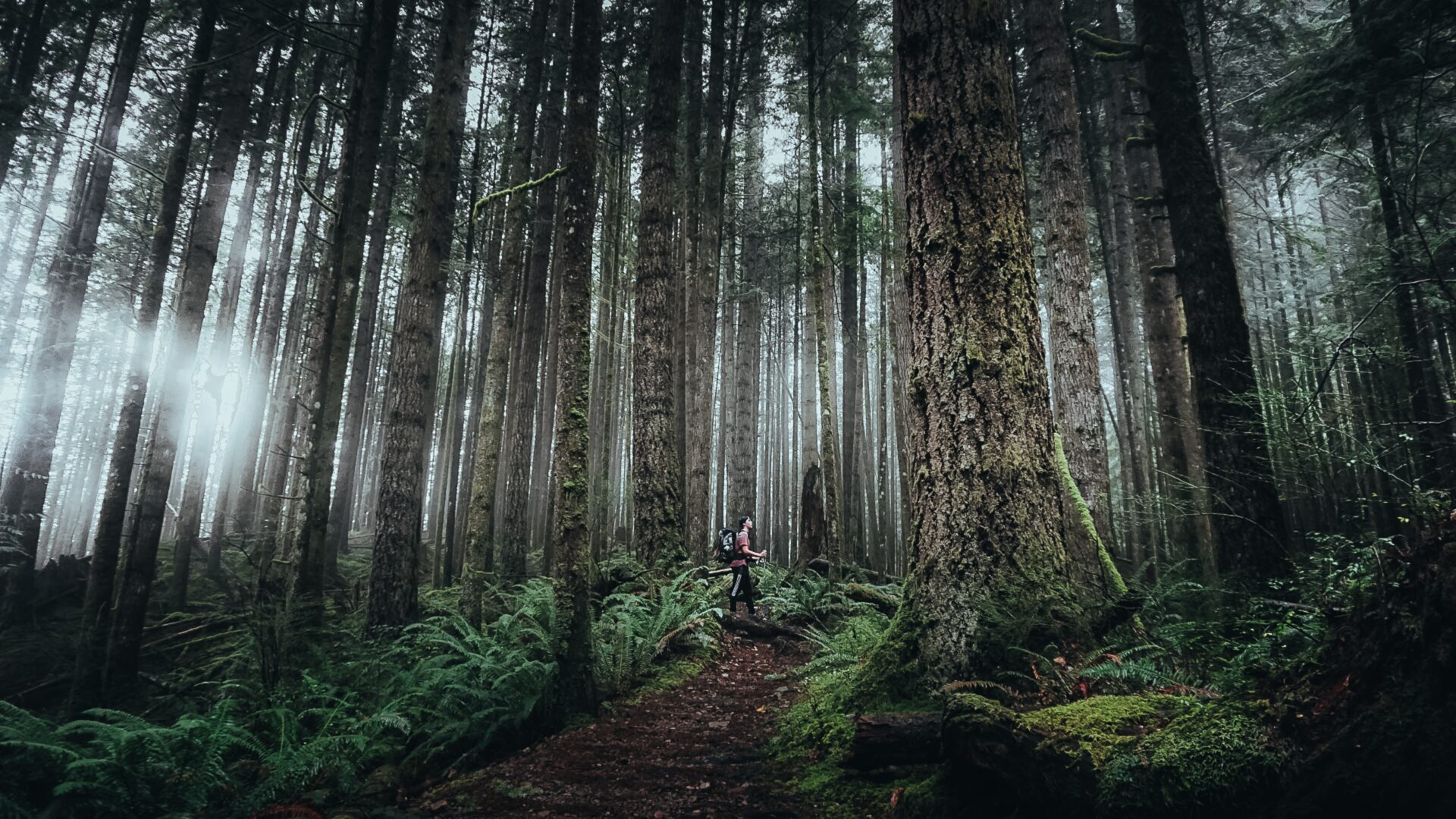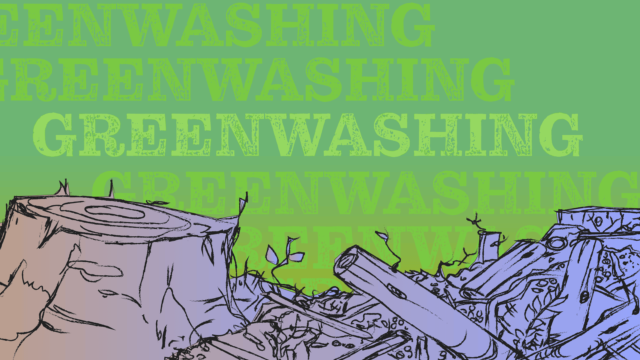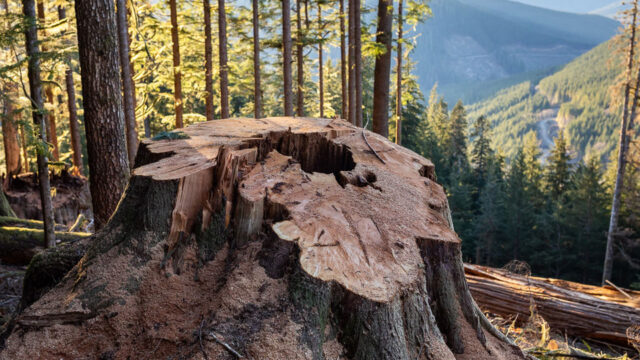On International Day of Forests, we look at how B.C. continues to prioritize private profits over public access despite polls showing nine out of ten B.C. residents support defending old-growth forests
What’s happening to forests in B.C.?
Occupying 10 per cent of Canada’s land mass and almost two-thirds of the province under forest cover, B.C. is one of the most biodiverse regions in the world. More than 300 species of birds breed in B.C. every year, 65 of which breed nowhere else except in coastal British Columbia. [1] It should be a no-brainer, then, that the remaining biodiversity-rich forests are teeming with environmental scientists, naturalists, conservationists, and birdwatchers, right?
Think again!
When scientist Dr. Royann Petrell tried to access B.C.’s old growth forests, under Tree Farm License 46 (TFL 46), to study the threatened Western Screech Owl and Marbled Murrelet, she was met with gate blockades and private security guards.
Turns out, Teal Cedar Products Ltd., the company involved in logging in TFL 46, was granted multiple road closures throughout the old-growth forest area by the Ministry of Forests. This includes the area established by the B.C. Supreme Court against protests near Fairy Creek. Despite several efforts to demonstrate the significance of her research and the fact that she was not involved in the protests, Dr. Petrell was repeatedly denied access. On behalf of Dr. Petrell, Ecojustice went to the B.C. Court of Appeal and subsequently the Forest Practices Board to challenge the road closures. However, in February 2024 the Board sided with the Ministry and Teal Cedar in concluding that the access roads would remain closed.
Not only does the Board’s endorsement of the road closures unjustifiably prevent scientists from monitoring at-risk species before their habitat is destroyed by logging — something Teal Cedar is under no obligation to do — it also represents an egregious infringement on the public’s right to access public land.
Who ‘owns’ the forests of British Columbia?
Colonial provincial law classifies two types of land: public (also called Crown) and private land. But a majority of land in so-called B.C. is unceded Indigenous territory. In other words, First Nations in B.C. never agreed to giving the rights to their territory, which the Crown claims as their own. The concept of ‘public land’ is inherently anti-Indigenous. However, if B.C. is going to claim land is ‘public,’ then industry should not have the discretion they have to block public access to that land, particularly when it comes to monitoring at-risk species and ecosystems before they are lost. We have a long way to go to ensure Indigenous rights are recognized and uplifted in law. Part of that work includes dismantling the current system that grants a disproportionate amount of control to industry.
Sadly, B.C is also in a biodiversity crisis with more than 1800 species at risk, due in large part to the indiscriminate logging of large swathes of old-growth forests. B.C.’s deforestation over the past 40 years is so stark that it can be seen from space. [2] What is worse is new leaked data shows that the Ministry of Forests is actively undoing the work of the Old Growth Technical Advisory Panel by allowing clearcutting of the rarest of old- growth that the panel recommended be deferred from logging.
On a day meant to raise awareness of not just the economic but ecological value of forests, it is critical to remember that every community in B.C. benefits from healthy forests. A forest’s web of roots locks soil into place, preventing landslides. Big old-growth trees create a cooler climate by trapping and absorbing moisture, mitigating wildfires and the increasing heat of the climate crisis.
What can the B.C. Premier do on International Day of Forests?
While the forestry industry is a significant economic backbone for many communities across the province, private logging companies cannot be allowed to make executive decisions on how forests are managed and who has access to them for the sake of lining the pockets of company executives. In his first 100 days as premier, David Eby committed to protecting old growth and prioritizing biodiversity and ecosystem health. Polling shows that an overwhelming majority of people in British Columbia believe it is important for the government to protect B.C.’s forest cover.
In fact, 92 per cent of the population wants to see protection for old-growth trees, less logging, partnerships with First Nations and support for a more diversified economy. [3] This significant shift in public perception shows that when a tree is logged in B.C.’s old-growth forests, everyone is listening. The question remains, is Premiere Eby?
References
[1] BC’s coastal biodiversity: the highest in North America — Raincoast Conservation Foundation
[2] B.C.’s forest loss can be seen from space — Vancouver Sun
[3] Poll shows nine in ten British Columbians support action to protect endangered old-growth forest — Sierra Club BC




